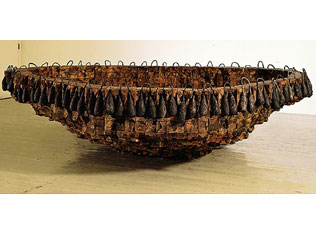A lecture by Ursula von Rydingsvard
dal 16/2/2003 al 17/2/2003
Segnalato da
16/2/2003
A lecture by Ursula von Rydingsvard
SFAI Lecture Hall, San Francisco
Using wood as the key to unlocking autobiographical and ancestral content, her sculpture merges the subjective approach of Abstract Expressionism with the modular grids of Minimalism, creating scarred surfaces that suggest both psychological turmoil and the forces of natural erosion.

February 17, 2003 7:30 pm
Ursula von Rydingsvard’s work mines its subject matter from the deepest veins of memory. Born in Germany in 1942, the artist spent most of her early childhood in refugee camps until her parents and their seven children were able to immigrate to the United States in 1950.
Using wood as the key to unlocking autobiographical and ancestral content, her sculpture merges the subjective approach of Abstract Expressionism with the modular grids of Minimalism, creating scarred surfaces that suggest both psychological turmoil and the forces of natural erosion.
She has had numerous solo exhibitions throughout the United States and Europe, as well as a number of important private sculpture commissions in the San Francisco Bay Area.
Admission: $6 general; $4 members, alumni, seniors, students, and disabled; SFAI students free. No advance tickets are available for SFAI lecture hall events.
Image:
Ursula von Rydingsvard, Ocean Floor (1996), combines cedar and pendant pods of cow intestines.
SFAI Lecture Hall
800 Chestnut Street
San Francisco, CA



